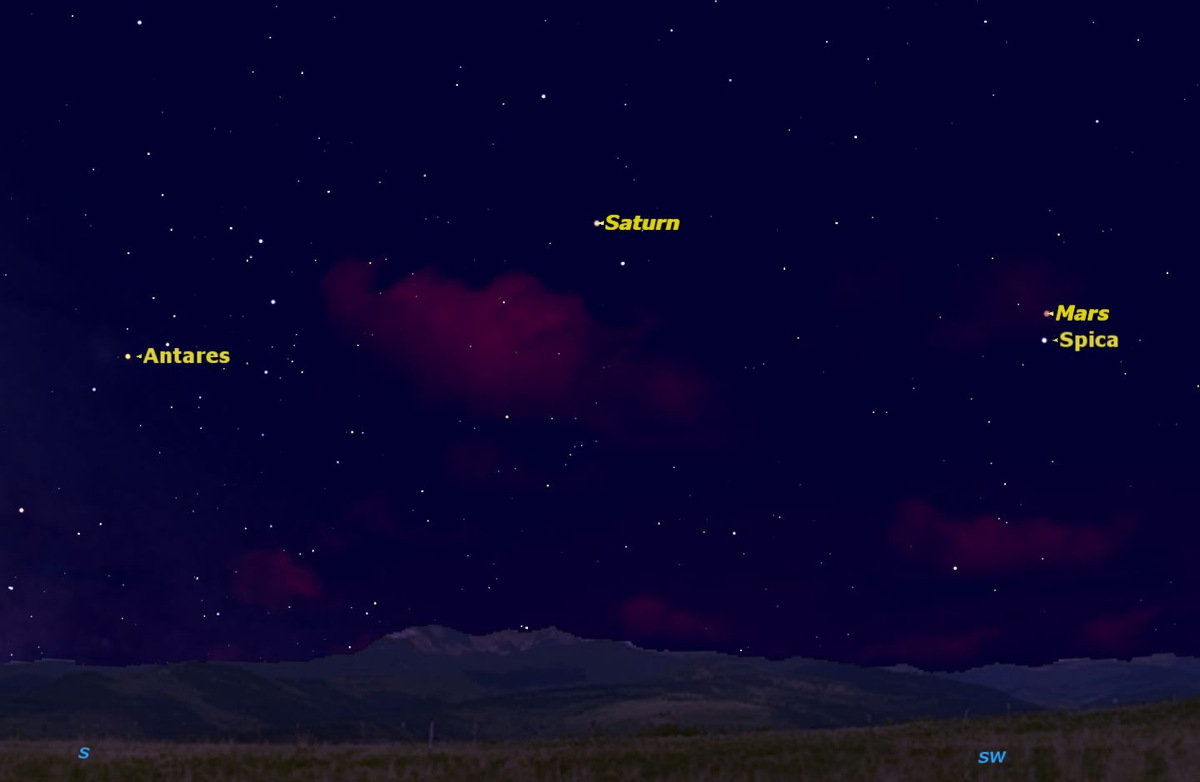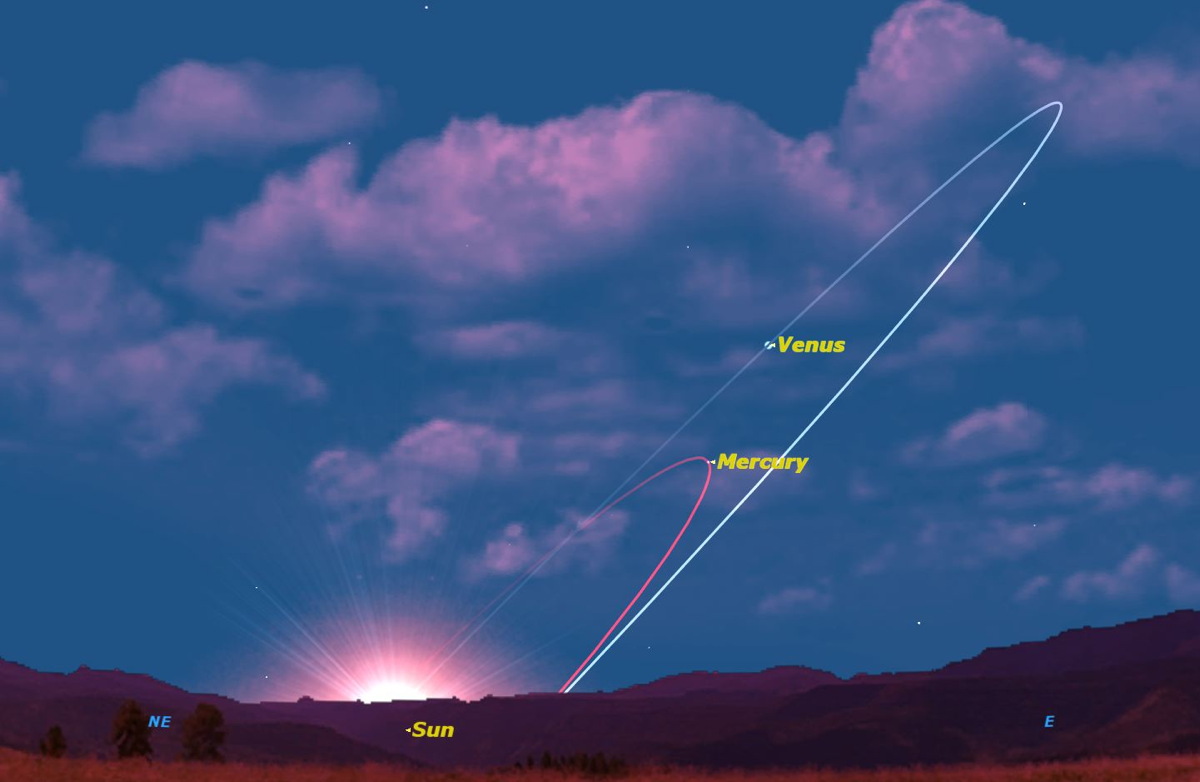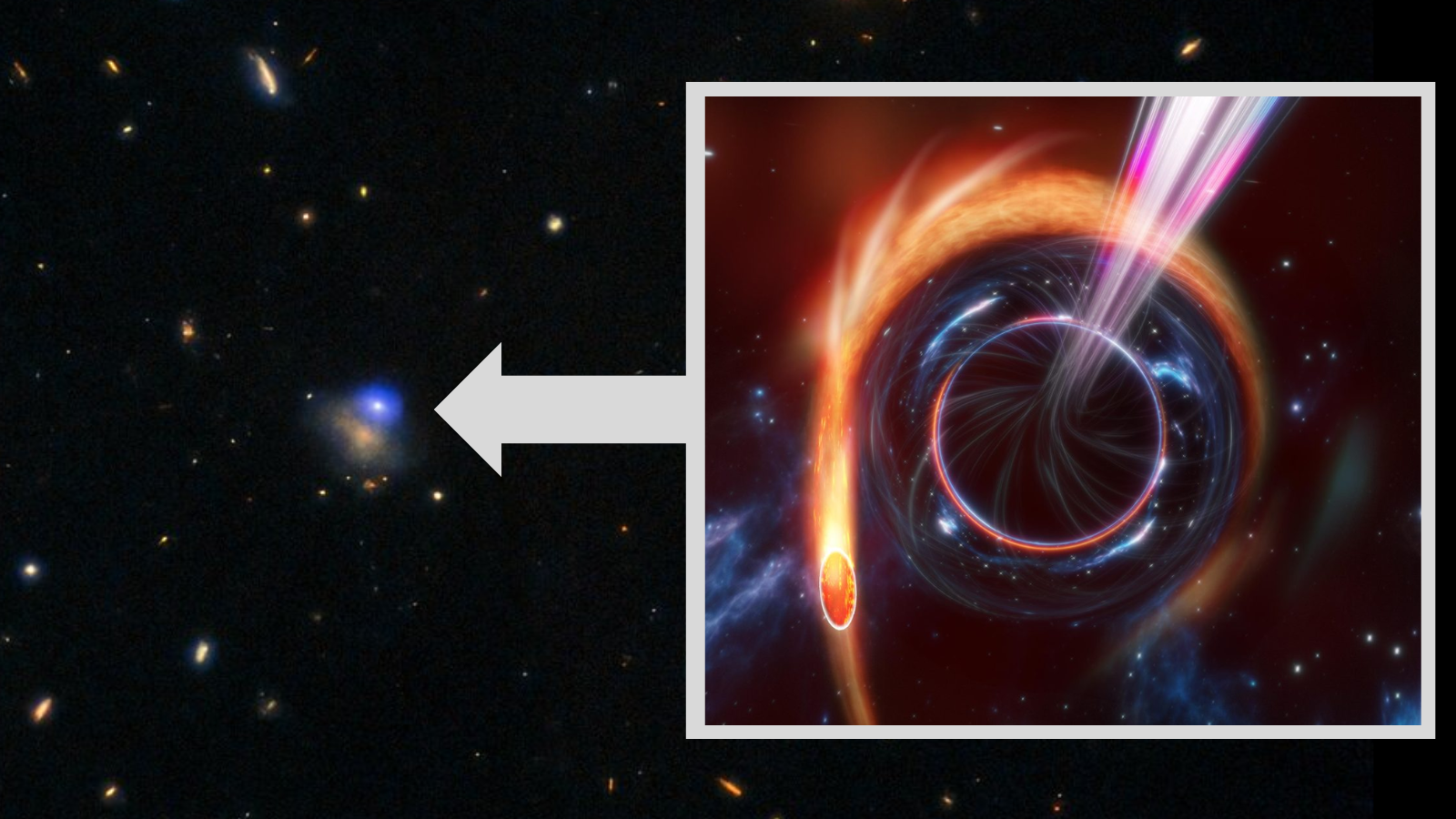Weekend Stargazing: Mars, Mercury, and Spica (Oh My!)

The night sky this week is filled with interesting views four planets at the beginning and end of each night, but will be at its best on Saturday night (July 12).
To begin your weekend stargazing, look towards the western night sky just as dusk falls. The sun has just set in the northwest, but at this time of year the ecliptic — the path that the sun, moon, and planets follow across the sky — is at a very shallow angle to the horizon, so the moon and planets hang low in the southwestern sky.
Mars is now moving quite quickly from west to east (right to left in the Northern Hemisphere), though not quite as fast as the sun. As a result, the sun will slowly overtake Mars, which will be lost from sight for some months in mid-2015. Usually it's hard to see the movements of the planets, but this week we have a fixed marker in the sky, the bright star Spica, the most brilliant star in the constellation Virgo. [Brightest Planets in July's Night Sky (Video)]
Weather permitting, you should be able to watch over the next few nights as Mars appears to noticeably move closer to Spica from night to night. Mars will pass the bright star on Saturday, July 12, and then move away. At their closest point, less than 2 degrees will separate the Mars and Spica. (Your closed fist held out at arm's length covers about 10 degrees of the night sky.) Notice the remarkable color contrast between reddish Mars and blue-white Spica.
Look over to the left (due south) for the red star Antares in the constellation Scorpius, so named because of its similarity in color to Mars. About half way in between, in the constellation Libra, you will can find the planet Saturn.
At the other end of the stargazing night, just before sunrise, night owls have the chance to spot two more planets, Mercury and Venus.
Venus is hard to miss, since it is the third brightest object in the sky after the sun and moon. Though now it is moving towards the far side of the sun, so is neither as bright nor as high in the sky as it was earlier this year.
Breaking space news, the latest updates on rocket launches, skywatching events and more!
Mercury is usually very hard to spot, but this week it is very close to Venus, which makes it easy to find. In the skywatching map with this guide, I've added the orbital paths of the two planets, so that you can see what's going on. You can see that Mercury is at the point in its orbit farthest from the sun, called greatest elongation west because it is towards the western horizon.
Venus was at its own greatest elongation west on March 22. In the three months since, it has continued to move around its orbit away from Earth to reach the point shown. Because the orbit of Venus is farther from the sun, it moves much more slowly than Mercury, so Mercury will be long gone by the time Venus has moved closer to Mercury's current position.
Take this unusual opportunity to observe four planets at the beginning and end of these short summer nights.
Editor's Note: If you capture an amazing view of Mercury, Venus, Mars or any other night sky object this weekend and would like to share your images for a possible gallery or story, send images and comments to Space.com managing editor Tariq Malik at: spacephotos@space.com.
This article was provided to Space.com by Simulation Curriculum, the leader in space science curriculum solutions and the makers of Starry Night and SkySafari. Follow Starry Night on Twitter @StarryNightEdu. Original article on Space.com.

Geoff Gaherty was Space.com's Night Sky columnist and in partnership with Starry Night software and a dedicated amateur astronomer who sought to share the wonders of the night sky with the world. Based in Canada, Geoff studied mathematics and physics at McGill University and earned a Ph.D. in anthropology from the University of Toronto, all while pursuing a passion for the night sky and serving as an astronomy communicator. He credited a partial solar eclipse observed in 1946 (at age 5) and his 1957 sighting of the Comet Arend-Roland as a teenager for sparking his interest in amateur astronomy. In 2008, Geoff won the Chant Medal from the Royal Astronomical Society of Canada, an award given to a Canadian amateur astronomer in recognition of their lifetime achievements. Sadly, Geoff passed away July 7, 2016 due to complications from a kidney transplant, but his legacy continues at Starry Night.


